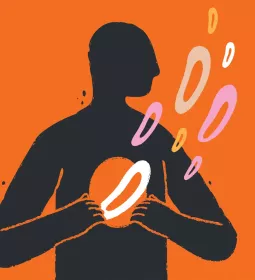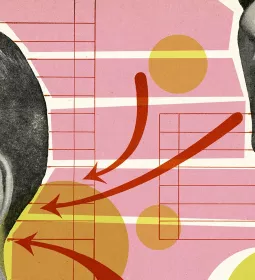Since I began my career in oncology massage in 2005, I have been hearing massage therapists say their approach with people who have cancer or a history of cancer is that they “just work lightly.” As I have continued to teach and practice in the space of serious illness, this seems to be a theme for many massage therapists when it comes to working with people with an illness with which the therapist is unfamiliar. Certainly, there are illnesses massage therapists may not know about, but this also happens when we simply don’t know what we should know about how bodies work or what happens when they don’t. Working lightly might, technically speaking, be “safe,” but it’s not accurate, it’s not effective, and it’s not ethical.

“Do No Harm” Is a Low Bar
When a client comes to you and shares that they are experiencing symptoms related to a chronic or serious illness (or even a not-so-chronic one), certainly they are expecting (as they should!) that you will not harm them, but they could have remained unharmed by staying home. They came to you in search of relief, support, and effective care. They are hoping you will understand some things about what’s bothering them in their body and that you will bring skill and discernment to the equation. Imagine if you went to a doctor and described some recent, inexplicable abdominal pain you were having and the doctor said, “I’m not familiar with that, but let’s try this medication. It might help. It probably won’t hurt.” Zero stars. Will not see again.
Apples and Oranges
Another problem with describing the work you’ll do (even if you’re only describing it that way in your head) as “light” is that “light” is subjective. If the work you typically do is something like structural integration or myofascial release, your “light” is probably quite different from the “light” for someone who typically does Bowen or polarity therapy. It reminds me of the phrase that I’ve spent 20 years encouraging massage therapists to edit: “Is this pressure OK?” What does this question mean? Are you asking me if I’m in excruciating pain? Are you asking me if you’re working in the “right” place? Maybe you want to know if I think you’re not “pushing” hard enough for my taste. Instead, you can ask:
-
“Is this pressure causing you pain?”
-
“Does this pressure feel useful in terms of what we talked about earlier regarding what brought you in today?”
These are clear questions that can be accurately answered and which lead to client-centered care. Working “lightly” is not clear, accurate, or client-centered. When you decide to “work lightly” in the face of something you don’t understand, what you’re saying is, “I don’t know what I should know to provide safe, ethical massage therapy for you today, but I’m going to wing it anyway. Cool?”
It’s not something any of us want to think about, but when you choose to guess and work lightly, you are disrespecting your client. You are insulting their intelligence and diminishing their worth. You are undermining the therapeutic relationship and undercutting their dignity. Not to mention, you are cheating them out of good care.
The Ethical Rub
Hands that work lightly are tentative, untrustworthy hands that undermine a client’s sense of autonomy and their expectation for care. When you’re not sure if what you’re doing could potentially hurt the person you’re touching, it’s impossible to support a sense of safety and connection. One of the big and important things that can happen during a massage therapy session is nervous system co-regulation. Co-regulation is the process of nervous systems being influenced by each other.
One problem with describing the work you’ll do as “light” is that “light” is subjective.
When you are knowledgeable about what you’re doing and you feel sure that your work is not only safe, but likely to be effective, both you and your client enjoy a sense of calming collaboration. When you’re unsure and anxious, your nervous system is dysregulated, making its messages unclear and unpleasant. So, what do we do in a world where we couldn’t possibly be intimately familiar with every disease and every condition? We learn how bodies work. We seek out science, biology, and pathophysiology research, articles, and courses. Massage therapists have a lot to learn, and that learning is not only about techniques.
Give a listen to Ruth Werner’s “I Have a Client Who . . .” podcast at abmp.com/podcasts. Check out some online education (like in the ABMP Continuing Education Center, YouTube videos from the Cleveland Clinic, or some other reputable, scientific sources). Want to learn about dementia? Teepa Snow has hours of incredible, valuable, free online resources. You can’t (nor should you try to) become an expert on diabetes, chronic kidney disease, dementia, cancer, and all other diseases and illnesses. But you can learn about how these conditions affect the body so you can use your old pal “clinical reasoning” to make informed decisions about how your work is likely to impact someone living with one or more of these illnesses, because even if you think they don’t, your clients are living with these conditions and you need to know about them. It’s nothing to take lightly.








